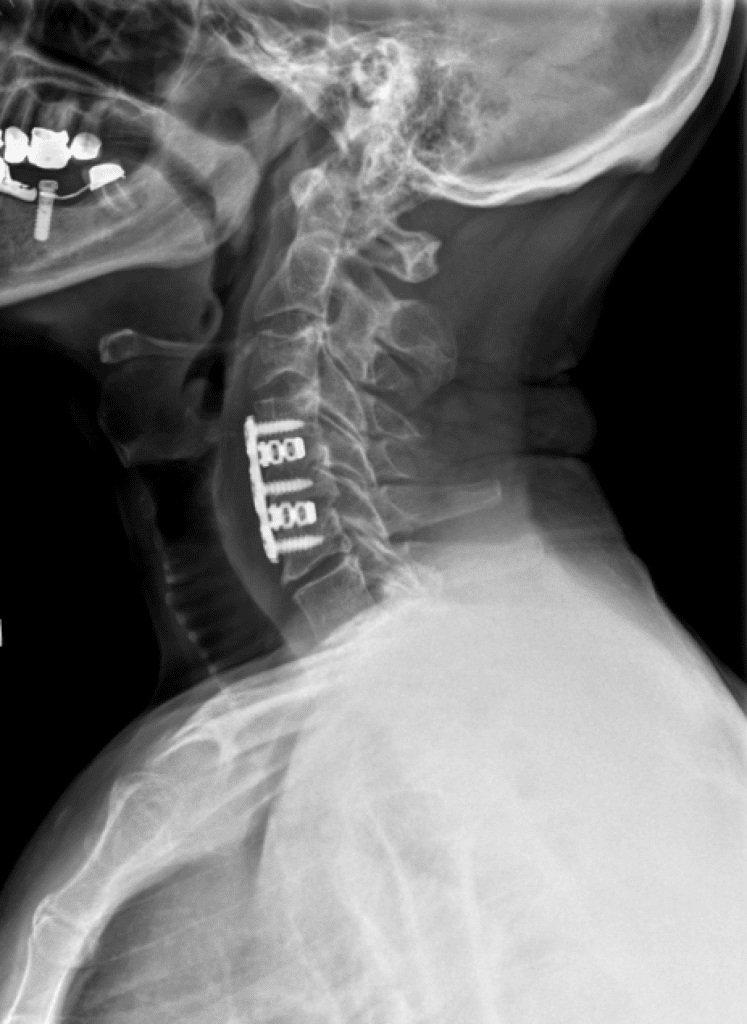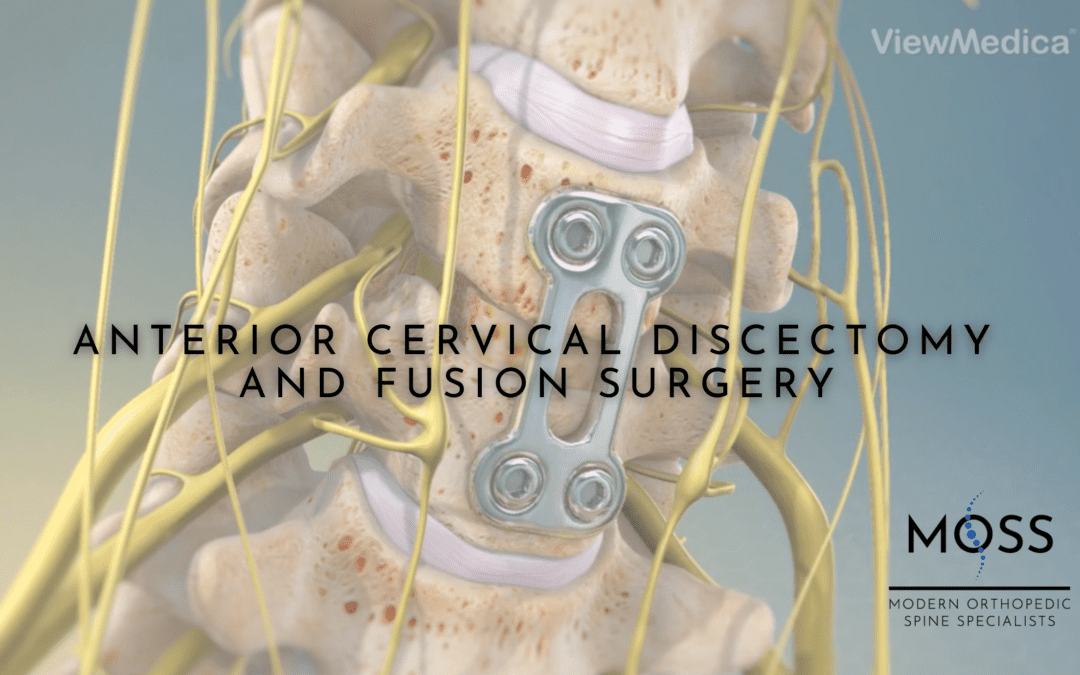Injury and degeneration can cause problems to the neck (cervical) region of the spine. When this occurs, symptoms can range from mild to severely limiting and sometimes dangerous. Thankfully, there are minimally invasive surgical techniques that can correct these problems with minimal damage to surrounding tissue and structures, which means better outcomes and quicker recovery. In this post we will discuss one of these techniques, Anterior Cervical Discectomy and Fusion (ACDF).
What is Anterior Cervical Discectomy and Fusion?
ACDF is a surgical procedure that removes a damaged intervertebral disc (the rubbery structures that provide cushioning between the vertebrae) and replaces it with an artificial spacer, which then fuses onto existing bone. This safe and effective procedure can also be used to remove bone spurs in the cervical area of the spine and treat a variety of conditions affecting the neck.
Overview of the ACDF Procedure
This minimally invasive surgical procedure is performed under general anesthesia. To access the spine, the surgeon will make a small incision at the front of the neck and gently move the muscle and soft tissue to the side, thereby preserving these structures by not cutting them. This anterior approach is better suited for accessing the cervical spine than through the back, which tends to be more painful and traumatic to the neck musculature.
Once the surgeon has accessed the spine:
- Damaged disc(s) or bone spurs are removed (discectomy).
- The disc that is removed is replaced with a bone graft or an artificial spacer.
- A metal plate and screws may be used to secure the graft.
- The small incision will then be closed.
- Over time, the new spacer which replaces the disc will “fuse” onto the vertebrae.
What conditions can ACDF treat?
ACDF can treat a variety of conditions, like:
- Cervical stenosis with myelopathy — A condition where the spinal canal narrows at the neck and compresses the spinal cord.
- Cervical spondylolisthesis — A condition where a vertebra slips out of place in the cervical (neck) portion of the spine. This can cause compression of a nerve root and/or the spinal cord.
- Cervicalgia — This is a term used to describe neck pain, but cervicalgia can also include neck stiffness and pain that radiates to the head, shoulder(s), and arm(s).
- Cervical foraminal stenosis — The sides of the spinal canal have openings (foramina) where spinal nerves exit. If these openings narrow, nerves can become pinched, or compressed. When this occurs in the neck, it is termed cervical foraminal stenosis which can cause pain radiating to the arms and/or hands.
- Cervical facet arthritis — A degenerative condition of the cervical region of the spine. The cartilage around the facet joints (which provide stability and help with neck movements) wears down, causing the facet joints to rub against each other. This causes pain and stiffness, but it can also cause bone spurs (osteophytes) to form.
- Cervical herniated discs — A condition where the soft center of the intervertebral discs (rubbery discs that provide cushioning between the bones of the spine) leaks out into the spinal canal, outer portion of the disc. This can occur in any of the discs of the spine, but when it occurs at the neck, ACDF may be indicated, depending on the severity of the compression and symptoms.
This is by no means an exhaustive list of conditions helped by ACDF, but your surgeon can discuss if it is right for you!

What can I expect after surgery?
Things to expect after ACDF:
- Oftentimes you can go home the same day, or the next day, with a prescription for pain medication.
- You can resume most activities of daily living when home, but your surgeon will discuss with you any limitations prescribed to promote healing and prevent injury.
- You will go home with a cervical collar that will help protect your neck from any movements that might injure your healing spine. This is generally worn for 4 weeks if you only had one disc removed, but if you had two or more, you may have to wear it for 6 weeks.
- You can remove your cervical collar to shower and eat.
- No driving while wearing a cervical collar since your ability to turn your neck and survey your surroundings while driving will be impaired.
- You will go home with a detailed list of instructions, and everything will be explained to you prior to discharge. As always, though, please call with any questions!
- Any pain you were experiencing prior to ACDF should be relieved rather quickly. If you had any numbness or tingling before surgery, however, this may take some time to resolve as numbness and tingling are signs of nerve damage and/or irritation. It may take a little time for your nerves to heal.
Anterior Cervical Discectomy and Fusion (ACDF) has been around for decades and is a tried-and-true technique. It is highly effective and safe, and with Dr. Armen Oganesian’s experience and skill, you can feel confident in this approach should it be recommended for you.
For an individual consultation, contact Dr. Armen Oganesian at The Modern Spine Specialists today! Please contact The Modern Spine Specialists at 805-370-0748, or email us at info@themodernspine.com.
You can also visit our office at:
250 Lombard Street
Thousand Oaks, CA 91360


Recent Comments